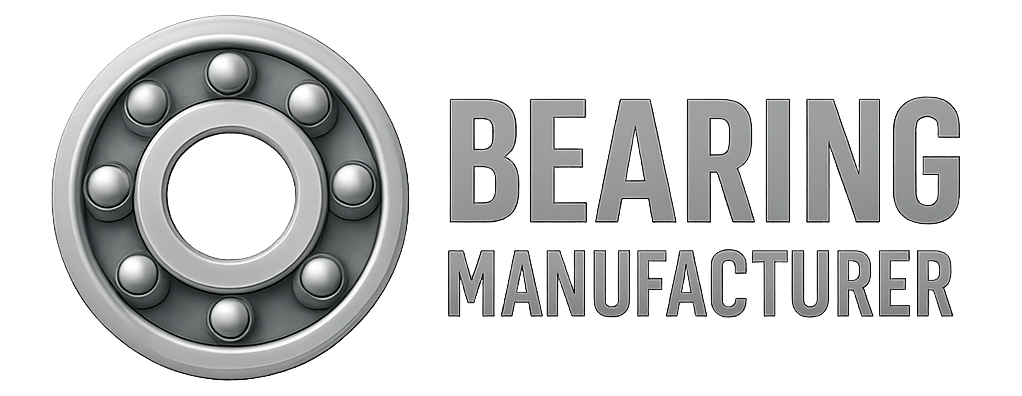Full complement bearings are often overlooked in bearing selection, yet they offer a distinct set of performance characteristics compared to standard caged bearings such as rubber-sealed, steel-sealed, and open-type bearings. This article explores what full complement bearings are, how they work, and when it’s appropriate to use them by analyzing their strengths and limitations.
What Are Full Complement Bearings?
Full complement bearings are rolling-element bearings that contain the maximum number of rolling elements possible by omitting the cage or separator. This unique design increases the bearing’s load-carrying capacity but also introduces some trade-offs in terms of speed and friction.
Common Types of Full Complement Bearings
1. Full Complement Cylindrical Roller Bearings
These bearings are typically used in heavy-duty applications and come in several configurations:
-
NCF Design Bearings
These bearings feature two integral flanges on the inner ring and one on the outer ring. A retaining ring holds the rollers in place but does not carry axial load. They are ideal for applications requiring axial disassembly. -
NJG Design Bearings
Part of the 23 heavy series, these bearings have two flanges on the outer ring and one on the inner ring. The rollers are self-retaining, which simplifies mounting and dismounting without roller loss. They are designed for high-load, low-speed uses. -
Matched Bearings
These are manufactured with tight tolerances for consistent cross-sectional height, ensuring even load distribution. They are available in sets of two (DR), three (TR), or four (QR) for more complex load conditions.
2. Full Complement Deep Groove Ball Bearings
These bearings contain more balls than their caged counterparts due to the absence of a separator, resulting in higher load capacity. However, this increases internal friction and reduces speed capability. They require proper lubrication and are best suited for low-speed, high-load applications.
Advantages of Full Complement Bearings
Higher Load Capacity
Full complement bearings contain more rolling elements than standard caged designs, significantly increasing dynamic and static load ratings. For instance:
-
6203ZZ (Caged)
-
Dynamic Load: 9,550 N
-
Static Load: 4,800 N
-
Speed: up to 171,000 rpm (grease), 201,000 rpm (oil)
-
-
6203 Full Complement
-
Dynamic Load: 14,000 N
-
Static Load: 7,000 N
-
Speed: limited to 2,000–3,000 rpm
-
Ideal for compact, high-load applications
-
Compact, Space-Efficient Design
These bearings can achieve high radial load capacity within limited space, making them suitable for installations where radial space is constrained.
Increased Contact Area
A greater number of rolling elements creates a wider contact zone, distributing the load more evenly and improving bearing life under high-stress conditions.
Better Shock Load Absorption
Full complement bearings are capable of withstanding and absorbing higher impact forces, making them ideal for environments with sudden or repeated shocks.
Simplified Manufacturing
The absence of a cage reduces part complexity, potentially lowering production costs and simplifying customization.
Enhanced Lubrication Potential
The open internal structure allows more room for lubricant and eliminates friction between the cage and rolling elements, enhancing wear resistance and cooling performance.
Disadvantages of Full Complement Bearings
Limited Speed Capabilities
Without a cage to guide the rolling elements, there is an increased risk of roller misalignment at high speeds. This can cause premature failure and makes full complement bearings unsuitable for high-speed applications.
Higher Internal Friction
The added number of rolling elements increases surface contact, which generates more heat and wear over time. Adequate lubrication is essential. Using ceramic rolling elements can help reduce friction and thermal buildup.
Risk of “Dead Clamping”
At higher speeds or under specific conditions, rolling elements may get stuck in raceway recesses, causing jamming or locking, a phenomenon known as dead clamping.
When to Use Full Complement Bearings
Full complement bearings are best used in applications that require:
-
High load-carrying capacity
-
Limited radial or axial space
-
Low-speed operation
-
High shock or vibration resistance
-
Long service life in harsh environments
Typical use cases include gearboxes, mining machinery, construction equipment, and industrial presses.
Conclusion
Full complement bearings offer compelling advantages in terms of load capacity, durability, and shock resistance, making them a strong choice for demanding, low-speed applications. However, engineers and buyers should be aware of their limitations in speed and friction. With proper selection and maintenance, full complement bearings can be a reliable solution for heavy-duty equipment and compact assemblies.
